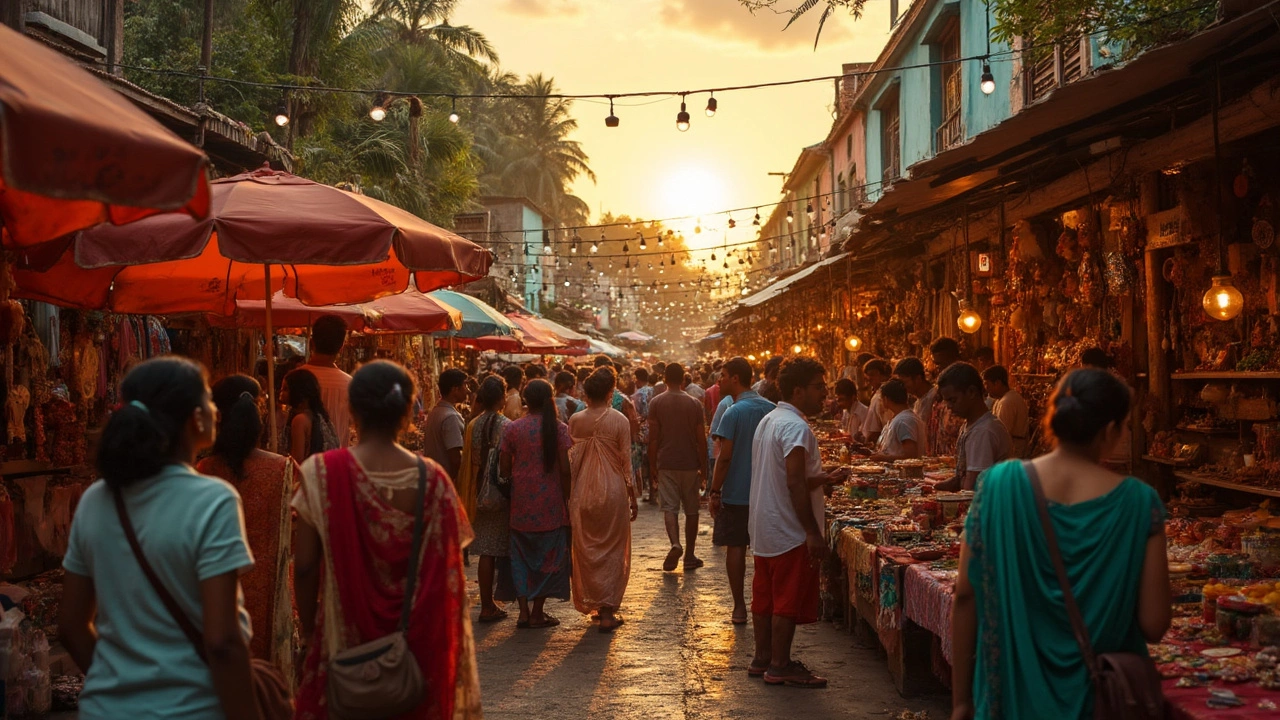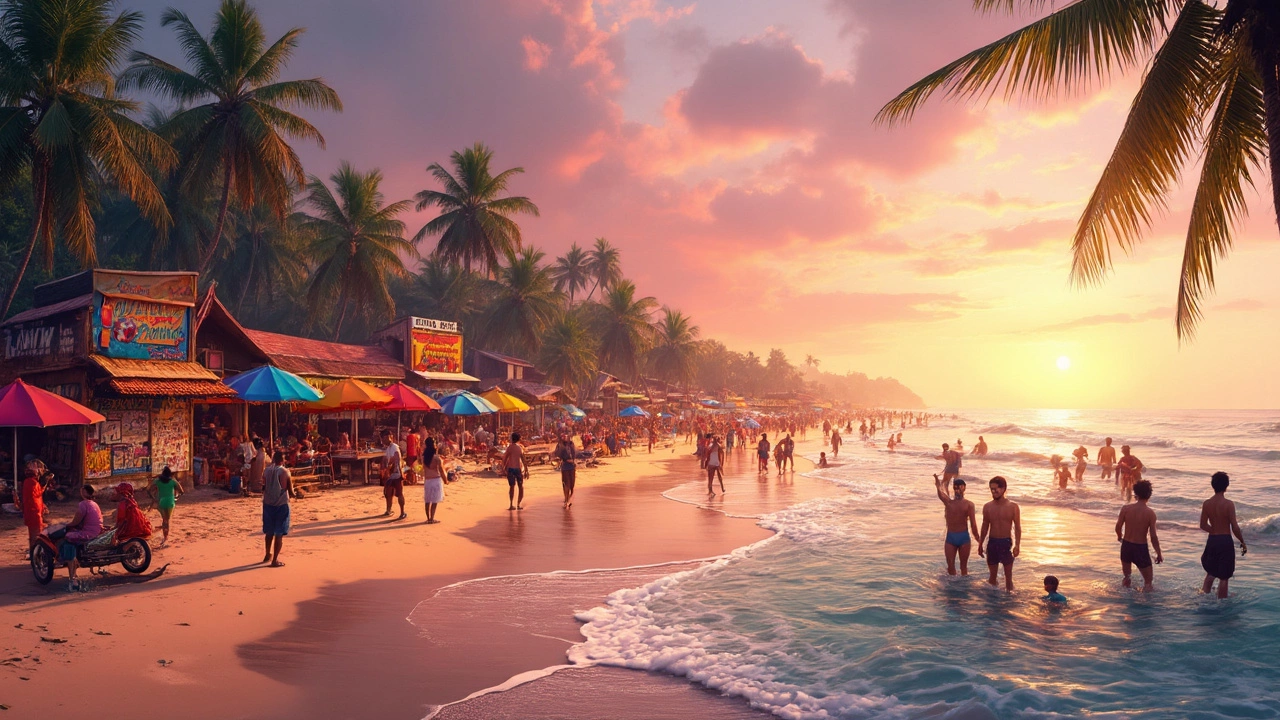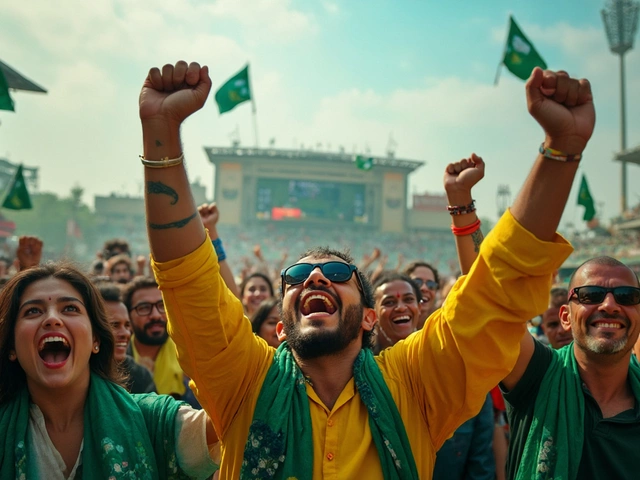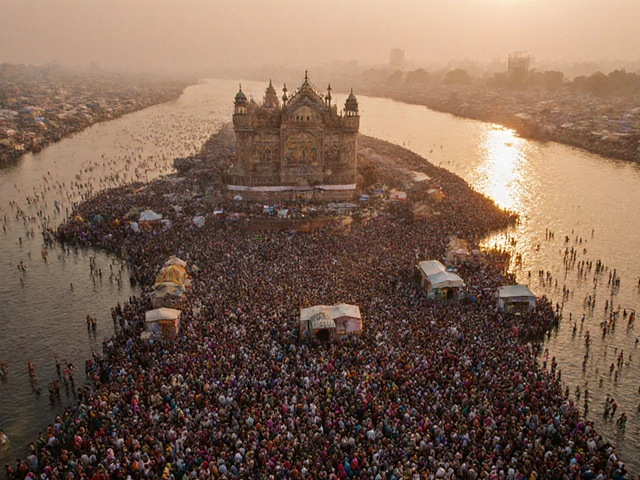You can’t talk about famous beach destinations in India without mentioning Goa. When people think of Goa, they picture golden sand, palm trees, and shacks serving cold drinks – and for good reason. But there’s a lot more going on here than just pretty beaches.
If you’re planning a trip, knowing what Goa is most famous for helps you hit the right spots and skip the tourist traps. Most folks visit for the beaches: places like Baga, Anjuna, and Palolem are buzzing all year. But each beach has its own crowd and vibe — from backpacker party hubs to family-friendly stretches.
Booking a scooter is probably the top tip for first-timers. The distances between beaches, markets, and party spots aren’t massive, but having wheels makes life so much easier (and it’s honestly fun). Just remember: helmets matter, and the cops do check.
- The Beaches Everyone Talks About
- Goa’s Epic Nightlife and Party Culture
- The Food and Markets Scene
- History, Culture, and That Laid-Back Vibe
- Adventure Sports and What Not To Miss
The Beaches Everyone Talks About
Goa’s claim to fame? Without a doubt, its beaches. If you’re chasing sunsets, swim spots, or just a place to vibe out with other travelers, this is the state for you. The north and south parts of Goa offer totally different scenes, so knowing where to go is half the trick.
North Goa is where you’ll find the action. Baga Beach is super popular — it’s packed with everything from water sports to shack parties and karaoke nights. Next door, Calangute Beach gets its nickname as “Queen of Beaches” because it’s so lively, especially in season. Anjuna Beach brings in the alternative crowd: think backpackers, midnight parties, and a weekly flea market that’s been running since the 1970s. Vagator Beach, a little quieter, is known for dramatic red cliffs and even bigger parties during festival season.
Now, if you’re after fewer crowds, smooth sand, and chilled-out beach bars, head south. Palolem Beach is postcard material — calm water, dolphins nearby, and bamboo huts right on the shore. Agonda Beach is even quieter, making it perfect for a lazy swim or reading session. It’s famous for its clean sand and nesting turtles in season, which is something you won’t find everywhere in India. Patnem Beach is the go-to for solo travelers who want a mix of yoga, chill cafés, and affordable stay options.
One quick tip: tides and seasons matter. The main tourist season runs from November to March when the water’s safe and the shack restaurants are open. Monsoon (June to September) is pretty, but most beach activities pack up and the sea gets rough, so it’s not ideal for swimming.
- If you want parties: hit up Baga, Calangute, or Anjuna.
- If you value peace and a bit of solitude: check out Palolem, Agonda, or Patnem.
- For family fun: Candolim and Colva are safe bets with plenty of activities for kids.
- Into water sports? Baga offers jet skiing, parasailing, and banana boat rides for all levels.
Every beach is different, so there’s no “one best.” What makes Goa special is how easy it is to bounce between these spots until you find your own favorite patch of sand.
Goa’s Epic Nightlife and Party Culture
Ask anyone what makes Goa tick after sunset and you’ll probably hear about wild beach parties, thumping club beats, and bars packed with people from around the world. It isn’t hype. Goa’s got the kind of nightlife you won’t find anywhere else in India.
The action usually starts in the late evening. If you want the full-on clubbing experience, head to spots like Tito’s Lane in Baga or Club Cubana in Arpora. These places have become legends for their open-air dance floors, cheap drinks, and mix of Bollywood and international music. Tito’s, for example, has been a local icon since the ’70s, often topping lists of must-visit nightlife places.
If you’re more into chilled-out beach bars, Anjuna and Vagator are the go-tos. Curlies at Anjuna is practically famous for its all-night raves and makeshift dance parties right on the sand. There’s also Shiva Valley for wild trance gatherings, especially on Tuesdays.
Bored of regular clubs? Silent Noise parties in Palolem switch things up. Everybody wears wireless headphones and grooves to their own chosen DJ. It sounds weird, but it’s a blast after a couple of drinks – plus, you won’t bother the neighbors.
Goa’s party crowd is a mix: you’ll run into backpackers, local teens, Mumbai clubbers, and the odd celebrity on holiday. The party scene peaks from October to March when the weather is perfect and international DJs often drop by.
- Goa hosts India’s biggest electronic music festival: Sunburn, held every December. If you want to experience the madness of huge crowds and top DJs, grab your passes early—they sell out quick.
- Goa also has happy hours everywhere, even at fancy places, so it pays to start your evening early.
- Entry fees keep out the riff-raff at some clubs, but most beach shacks just want you to buy a drink or two.
Check out the rough costs below to plan your night:
| Nightlife Experience | Average Cost (per person in INR) |
|---|---|
| Club Entry | ₹1,000 - ₹2,000 |
| Two Beers at a Beach Shack | ₹400 - ₹600 |
| Silent Noise Headphone Rental | ₹600 - ₹800 |
| Sunburn Festival Day Pass | ₹3,000 - ₹5,000 |
Couple quick tips: carry a copy of your ID, dress smart (some clubs won’t let men in with flip-flops), and always sort out your ride home before you get too many drinks in—Goa’s roads can get tricky late at night. And yes, drugs are illegal, even in party central.

The Food and Markets Scene
If you visit Goa and skip its food and markets, you’re missing half the fun. Here, you’re looking at everything from spicy fish curry to live music at open-air flea markets. Let’s talk grub first. Goan cuisine is a wild mix of Indian and Portuguese influences, thanks to four centuries of colonial history. Don’t leave without trying the classic fish thali, Goan pork vindaloo, or prawn balchão. And if you’re into seafood, shack menus along every beach serve super fresh catch of the day—usually straight from the morning market.
The night markets aren’t just about shopping — they’re an experience. Arpora Saturday Night Market draws the biggest crowd. It runs late with food stalls, handmade crafts, live bands, even tattoo artists. A shopper’s checklist always includes:
- Anjuna Flea Market for budget clothes, silver jewelry, and imported snacks
- Mapusa Market on Friday for the real local scene — spices, cashews, sausage bread, and knock-off sunglasses
- Margao Municipal Market if you’re hunting for cheap, authentic Goan spices and dried fish
You’ll see a ton of stalls offering feni, the local cashew or coconut liquor. Locals drink it neat, but it’s punchy, so sip slow if you try it.
Prices in the markets aren’t fixed. Bargaining is expected, and sometimes you get stuff for half the first asking price. Carry some cash; card machines often don’t work or, honestly, don’t exist outside the fancier places.
Curious about what folks buy in Goa’s markets? Here’s some quick local data:
| Popular Market Buy | Average Price (₹) | Where to Find |
|---|---|---|
| Cashew nuts (per kg) | 600-800 | Mapusa, Panaji |
| Bebinca cake (per slab) | 250-350 | Margao, supermarkets |
| Handmade jewelry | 150-1000 | Anjuna, Arpora |
| Beachwear | 300-1200 | Anjuna, Calangute |
| Goan spices (per pack) | 60-120 | Mapusa, Margao |
There’s a reason why Goa feels like a global food capital wrapped in beachwear. You get so much in one place: street-side stalls, European bakeries, beach cafés, and even vegan joints. There’s something for everyone, but don’t miss out on the real local flavors—ask for the Goan stuff, not just the generic Indian menu.
History, Culture, and That Laid-Back Vibe
Goa’s vibe is nothing short of unique, and a lot of that comes from its tangled history. Goa was ruled by the Portuguese for over 450 years, so you’ll spot old whitewashed churches like the Basilica of Bom Jesus (it’s over 400 years old!). Walk around Panaji and Old Goa, and you’ll see bright houses with tiled roofs, narrow lanes that feel straight out of Europe, and street signs in Portuguese. Even a lot of locals have Portuguese last names.
The mix of Indian and European cultures shows up in everything—from architecture to the music you’ll hear at a local bar. Don’t be surprised if you stumble into a festival. Goa Carnival in February is a big deal—think colorful floats, dancers, street parties, and everyone in the best mood. There’s also the massive Shigmo festival, which is like Goa’s own take on Holi with parades and bright costumes.
Food is another window into culture here. Alongside classic curries, you’ll find vindaloo, xacuti, and spicy seafood platters—thank the Portuguese influence for the bakery culture and stuff like bebinca (a killer local dessert). Try small, family-run cafés and bakeries to taste the real deal.
One more thing: the laid-back vibe isn’t just a stereotype. Shops close for a few hours in the afternoon so owners can nap or enjoy family lunches. People call it "susegad," a term that basically means taking it easy, and it’s a legit part of the everyday lifestyle.
For anyone chasing more than just Goa’s beaches, get off the main road, see a heritage mansion, talk to locals, and just soak up the chill. That’s the heart of what makes Goa unforgettable.

Adventure Sports and What Not To Miss
Goa isn’t just about sunbathing and beach parties. It’s a magnet for adventure seekers looking to spice up their trip. If you’re into water sports, you’re in the right place—Goa is basically India’s main playground for anything involving the sea.
Let’s start with the basics. Jet skiing and parasailing are everywhere along the big beaches like Baga, Calangute, and Colva. Expect to pay around ₹800–₹1,500 for a ride, and the best time to go is between October and May when the sea is calmer. Safety jackets are always given, but if you don’t get one—demand it.
If you’re curious about what’s underwater, snorkeling and scuba diving trips leave daily from spots like Grand Island and Bat Island. Operators run quick courses for beginners and always include gear. Water is clearest between November and March, and you might spot parrotfish, butterflyfish, and even a shipwreck or two.
Keen on bigger thrills? Kayaking through the mangroves in places like Chorao or Nerul lets you spot rare birds and enjoy the silence away from the usual crowds. White water rafting isn’t what most folks expect in Goa, but it’s a thing on the Mhadei River, especially during the monsoon (June–September).
Not every adventure happens in the water. Hot air ballooning at Assolda lets you catch sunrise over paddy fields—book a slot before the crowds pick up, especially from December through February. Bungee jumping finally landed in Goa not long ago, with safe jumps organized near Anjuna, and it’s run by certified professionals.
- Goa is a top pick in India for water sports—jet skiing, parasailing, and banana boat rides run almost year-round, but check for “closed for monsoon” signs in June–September.
- Always go with licensed and reviewed operators—don’t just grab the nearest shack advertising ‘cheapest price’ because safety isn’t worth risking.
- Pack sunscreen that handles sweat and salt water, plus clear zip bags for your phone and cash.
- Want a break from the crowds? Head south to Palolem for quieter kayaking or try paddleboarding early morning when the sea’s glassy.
No matter how you take your adventure, there’s no shortage of ways to make your Goa trip a notch above the usual beach holiday. Try something new—you’ll go home with better stories than just a tan.



